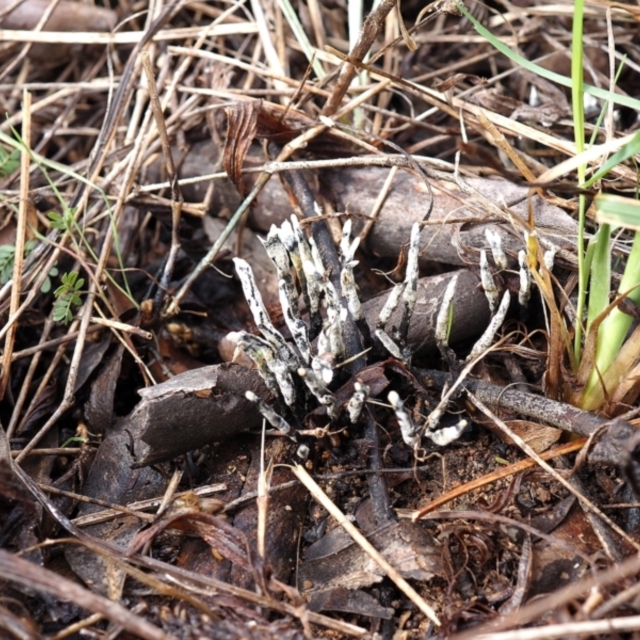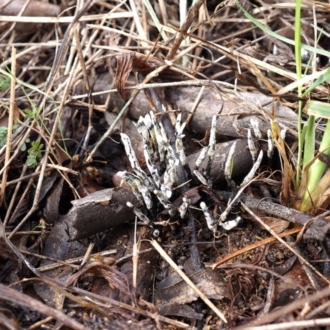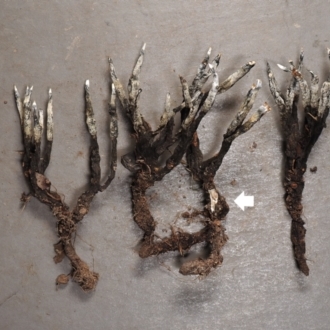Xylaria 'hypoxylon group'
The fruitbody varies from a simple stalk to markedly branched and grows up to 10 centimetres tall (though often less). The fruitbodies have a tough consistency but may be pliable to some degree. However, when dry they are fairly brittle. The stems and branches vary greatly in form, from circular in cross-section to quite flat and wide and from a few millimetres to over a centimetre in greatest width. If you wish to see the variation in form, look at Figures 8 and 9 in the reference given below.
The fruitbodies are black externally and white internally. However, you often see fruitbodies coated with a white dusting. You are then seeing the fruitbodies at the stage when they are producing asexual spores and it is those spores that make up that white dusting. Sexual spores are black and are produced (at a different time) internally in tiny chambers (or, to use the technical term, perithecia).
The fruitbodies grow from wood, which may be buried and so make it seem as though the fruitbodies are growing in soil.
Apart from Xylaria hypoxylon itself there are other species of the same appearance, so you need to look at microscopic features to identify a species. Hence the use of 'hypoxylon group' on Canberra Nature Map. Members of the group occur in a variety of habitats and, as a group, are cosmopolitan.
Look-alikes
There are a number of Xylaria species in Australia and one feature of the genus is the black outer and white inner. They vary from thin and almost wiry to stubby and very finger-like (with rounded apices).
Species of Geoglossum are black, but grow from soil (not wood); are simple, club-like stalks; are black internally and have a fleshy texture.
Reference
M. Stadler, D. L. Hawksworth & J.Fournier, (2014), The application of the name Xylaria hypoxylon, based on Clavaria hypoxylon of Linnaeus, IMA Fungus, 5(1), 57-66 (online at: https://imafungus.biomedcentral.com/track/pdf/10.5598/imafungus.2014.05.01.07.pdf).
Xylaria 'hypoxylon group' is listed in the following regions:
Species information
- Xylaria 'hypoxylon group' Scientific name
- Common name
- Not Sensitive
- Cosmopolitan
- Unknown
- Machine learning
Follow Xylaria 'hypoxylon group'
Receive alerts of new sightings
SubscribeLocation information
-
Maps
Namadgi National Park Oakey Hill -
Places
Cotter River, ACT Lyons, ACT











